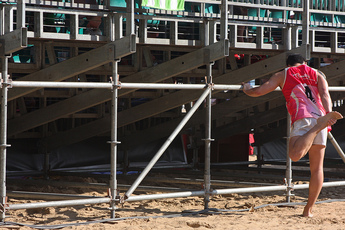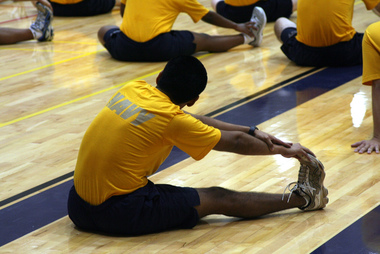- Home
- About Us
- TSPT Academy
- Online Courses
-
Resources
- Newsletter
- Business Minded Sports Physio Podcast
- Day in the Life of a Sports PT
- Residency Corner
-
Special Tests
>
-
Cervical Spine
>
- Alar Ligament Test
- Bakody's Sign
- Cervical Distraction Test
- Cervical Rotation Lateral Flexion Test
- Craniocervical Flexion Test (CCFT)
- Deep Neck Flexor Endurance Test
- Posterior-Anterior Segmental Mobility
- Segmental Mobility
- Sharp-Purser Test
- Spurling's Maneuver
- Transverse Ligament Test
- ULNT - Median
- ULNT - Radial
- ULNT - Ulnar
- Vertebral Artery Test
- Thoracic Spine >
-
Lumbar Spine/Sacroiliac Joint
>
- Active Sit-Up Test
- Alternate Gillet Test
- Crossed Straight Leg Raise Test
- Extensor Endurance Test
- FABER Test
- Fortin's Sign
- Gaenslen Test
- Gillet Test
- Gower's Sign
- Lumbar Quadrant Test
- POSH Test
- Posteroanterior Mobility
- Prone Knee Bend Test
- Prone Instability Test
- Resisted Abduction Test
- Sacral Clearing Test
- Seated Forward Flexion Test
- SIJ Compression/Distraction Test
- Slump Test
- Sphinx Test
- Spine Rotators & Multifidus Test
- Squish Test
- Standing Forward Flexion Test
- Straight Leg Raise Test
- Supine to Long Sit Test
-
Shoulder
>
- Active Compression Test
- Anterior Apprehension
- Biceps Load Test II
- Drop Arm Sign
- External Rotation Lag Sign
- Hawkins-Kennedy Impingement Sign
- Horizontal Adduction Test
- Internal Rotation Lag Sign
- Jobe Test
- Ludington's Test
- Neer Test
- Painful Arc Sign
- Pronated Load Test
- Resisted Supination External Rotation Test
- Speed's Test
- Posterior Apprehension
- Sulcus Sign
- Thoracic Outlet Tests >
- Yergason's Test
- Elbow >
- Wrist/Hand >
- Hip >
- Knee >
- Foot/Ankle >
-
Cervical Spine
>
- I want Financial Freedom
- I want Professional Growth
- I want Clinical Mastery
There are various types of stretching techniques: sustained, ballistic, proprioceptive neuromuscular facilitation (PNF), etc. They have the common goal of increasing musculotendinous length. Before considering which type is best, we must consider the properties of muscle. Muscles are composed of viscoelastic characteristics that can be influenced by stretch. The elastic component refers to the fact that a muscle has built in memory of it's original length. Just like the elastic part of your socks, given a temporary stretch, a muscle (or sock) will contract back into its resting length. That being said, with proper technique, a more permanent (or plastic) change in muscle length can be achieved. One of these techniques is a sustained stretch. But how long do we hold this stretch? In a classic study by Bandy & Irion, the researchers examined the difference in muscle length over time period of 6 weeks following sustained stretching programs based on time periods of 15, 30, and 60 seconds. A control group of no stretching was also followed. The study had several interesting findings. No significant differences in muscle length were found between the no stretching group and 15 second stretch group. This begs the question, what is the point of wasting time on a 15 second stretch, if there are no lasting effects. The results also found that significant gains were achieved with both the 30 second and 60 second groups, but minimal increase was found for the 60 second group. This means there isn't really a point of holding a stretch for 60 seconds either. The impact of this study displays the importance of reinforcing 30 second holds for stretches during a HEP. We often see our patients say they are holding a stretch for 30 seconds when in reality they are counting to 30 practically in one breath. It's no wonder they aren't seeing changes! As we mentioned before, there are several different methods of stretching with the most common being ballistic, sustained, and PNF. Ballistic stretching is not usually performed or recommended by health care practitioners due to its link to injury. The theory of ballistic stretching is to exceed the normal constraints of the muscle in order to achieve length increases, which suggests damaging the muscle. In regards to deciding between PNF and sustained stretch, there is still ongoing debate as to which obtains better results. O'Hora et al performed a study that looked at the immediate effects of 1 bout of PNF versus sustained stretch versus no stretch. The PNF stretch was a contract-relax maneuver of the hamstrings for 6 seconds. They found both PNF and sustained stretch to have significant changes in length following 1 bout. PNF changes were found to be greater than sustained. In the discussion, the authors reviewed the discrepancy in the literature regarding differences between PNF and sustained stretches, reminding the readers that there are many studies that have found each to be more effective than the other. An obvious issue with this study was the fact that the authors only looked at immediate effects of stretch and did not examine long-term effects. What can be taken from these findings and the discussion is that both 30-second sustained stretch and contract-relax can result in increases in muscle length. The debate goes on in regards to which is more successful. A combination we like to use is 3 sessions of contract-relax at end range, followed by a 30 second sustained stretch. References:
Bandy & Irion. (1994). The Effect of Time on Static Stretch on the Flexibility of the Hamstring Muscles. Phys Ther. 1994 Sep;74(9):845-50. Web. 6 April 2013. O'Hora J, Cartwright A, Wade CD, Hough AD, Shum GL. (2011). Efficacy of Static Stretching and Peripheral Neuromuscular Facilitation Stretch on Hamstrings Length after a Single Session. J Strength Cond Res. 2011 Jun;25(6):1586-91. Web. 6 April 2013.
2 Comments
LUISA
4/10/2013 09:23:29 am
Hola soy estudiante de terapia física y rehabilitación en Perú y hace poco también estuve buscando información sobre los estiramientos. como aplicarlos, cuanto tiempo, y número de repeticiones ...sobre todo cuando leí un articulo que decía que estirar era poco beneficioso para los deportistas e incluso perjudicial al disminuir la velocidad angular del movimiento... ... quisiera compartir con Uds. esta revisión sobre estiramientos y ademas la comparación con el calentamiento: http://cdeporte.rediris.es/revista/revista46/artestiramiento285.htm
Reply
Jim Heafner
4/10/2013 10:19:10 am
Luisa,
Reply
Leave a Reply. |
Dr. Brian Schwabe's NEW Book in partner with PaleoHacks!
Learn residency-level content on our
Insider Access pages We value quality PT education & CEU's. Click the MedBridge logo below for TSPT savings!Archives
July 2019
Categories
All
|








 RSS Feed
RSS Feed